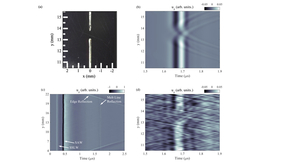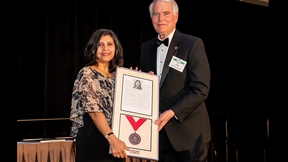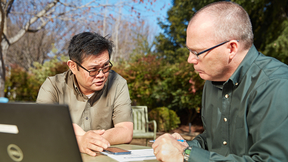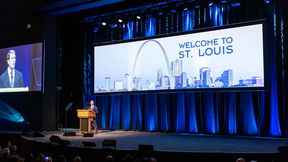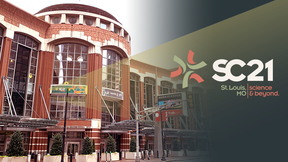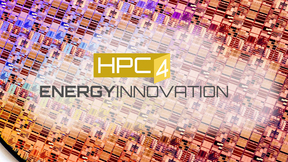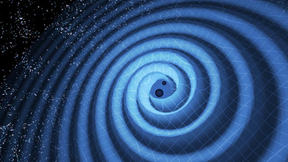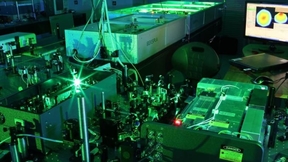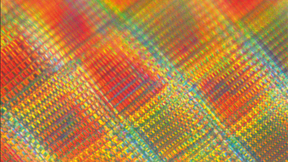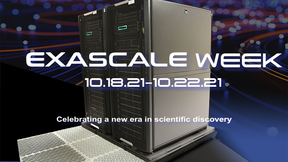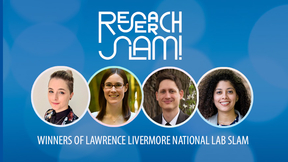Back
The Department of Energy (DOE) today launched the spring 2022 solicitation for the High Performance Computing for Energy Innovation (HPC4EI) initiative, seeking proposals from industry that address key energy and decarbonization-related challenges in domestic manufacturing. The latest HPC4EI funding opportunity is sponsored by the HPC4Manufacturing (HPC4Mfg) Program, one…
Lawrence Livermore National Laboratory (LLNL) researchers have developed a new all-optical ultrasound technique capable of performing on-demand characterization of melt tracks and detecting formation of defects in a popular metal 3D printing process. In a paper published by Scientific Reports, Lab researchers propose a diagnostic using surface acoustic waves (SAW),…
The National Aeronautics and Space Administration (NASA) announced April 15 it has awarded Lawrence Livermore National Laboratory (LLNL) and a private company with funding to develop LLNL’s revolutionary volumetric additive manufacturing (VAM) 3D printing technology to produce artificial cartilage tissue in space. The award, one of eight projects selected by NASA’s In…
Versatile and ubiquitous, glass is increasingly found in specialized applications such as fiber optics, consumer electronics and microfluidics for “lab-on-a-chip” devices. However, traditional glassmaking techniques can be costly and slow, and 3D-printing glass often results in rough textures, making them unsuitable for smooth lenses. Using a new laser-based Volumetric…
Lawrence Livermore National Laboratory’s Huban Gowadia has been inducted into the state of Alabama’s Engineering Hall of Fame (EHF). The principal associate director for Global Security, Gowadia was one of 10 engineers inducted into the state’s EHF during a ceremony last month attended by about 250 people. She was nominated for Alabama’s EHF by the former dean of the…
Lawrence Livermore National Laboratory’s (LLNL) Engineering mentoring program has yielded many rewarding matchups, not least that of Yanto Mualim and Jerry Wheeler. Mualim, who works in the Lab’s Environment Safety & Health program, joined LLNL in 2018 with a focus on controls engineering. After two years, as his project wrapped up, Mualim began looking for new…
A Lawrence Livermore National Laboratory (LLNL) team has developed a comprehensive dynamic model of COVID-19 disease progression in hospitalized patients, finding that risk factors for complications from the disease are dependent on the patient’s disease state. Using a machine learning algorithm on a dataset of electronic health records (EHRs) from more than 1,300…
Lawrence Livermore National Laboratory’s work on consumables for COVID-19 testing was highlighted in a recent special issue of the Materials Research Society (MRS) Bulletin focusing on materials science innovation in response to the pandemic. Guest-edited with an introduction by Crystal Chu (Lehigh University), Claire Witherel (University of Pennsylvania) and LLNL research…
A Lawrence Livermore National Laboratory (LLNL)-led collaboration targeted at using machine learning to reduce defects and carbon emissions in steelmaking is one of eight new projects receiving Department of Energy (DOE) funding through the High Performance Computing for Manufacturing (HPC4Mfg) Program. DOE’s Office of Energy Efficiency and Renewable Energy (EERE)…
Earlier this year, thin-film microgrid arrays developed at Lawrence Livermore National Laboratory (LLNL) and used in neurologist Jon Kleen’s patients at the University of California, San Francisco (UCSF) showed that hippocampal brain activity consisted of waves that traveled bi-directionally during behavioral tasks. These thin-film microgrid arrays are designed not just to…
It was a Supercomputing conference like none other before it. For the first time ever, the 2021 International Conference for High Performance Computing, Networking, Storage and Analysis (SC21) went hybrid, with dozens of both in-person and virtual workshops, technical paper presentations, panels, tutorials and “birds of a feather” (BOF) sessions. Under the ongoing specter…
A suite developed by a Lawrence Livermore National Laboratory (LLNL) team to simplify evaluation of approximation techniques for scientific applications has won the first-ever Best Reproducibility Advancement Award at the 2021 International Conference for High Performance Computing, Networking, Storage and Analysis (SC21). Newly instituted by the conference, the award…
The U.S. Department of Energy's (DOE) High Performance Computing for Energy Innovation (HPC4EI) initiative, managed by Lawrence Livermore National Laboratory, is seeking proposals for projects that can leverage DOE supercomputing to advance clean energy technologies. The fall 2021 solicitation targets industry partners for collaborations with DOE national laboratories that…
The scientific computing and networking leadership of the U.S. Department of Energy’s (DOE’s) national laboratories will be on display at SC21, the International Conference for High-Performance Computing, Networking, Storage and Analysis. The conference takes place Nov. 14-19 in St. Louis via a combination of on-site and online resources. The theme of this year’s…
The announcement that the Laser Interferometer Gravitational-wave Observatory (LIGO) had detected gravitational waves during the merger of two black holes sent ripples throughout the scientific community in 2016. The earthshaking news not only confirmed one of Albert Einstein’s key predictions in his general theory of relativity, but also opened a door to a better…
As 3D printing continues to grow and evolve, diagnostics capable of monitoring builds in real-time have become essential tools for producing quality parts, particularly in emerging printing technologies such as Liquid Metal Jetting (LMJ). In LMJ, tiny molten metal droplets are ejected from a nozzle at high speeds to 3D print a part in layers, similar to inkjet printers on…
Lawrence Livermore National Laboratory (LLNL) scientists and engineers have collected three awards among the top 100 industrial inventions worldwide. The trade journal R&D World Magazine announced the winners of the awards, often called the “Oscars of invention,” during a three-day virtual ceremony — Oct. 19-21 — and on the magazine’s website. With this year’s results,…
Similar to grass stems, Lawrence Livermore National Laboratory (LLNL) scientists have created nanostrut-connected tube-in-tubes that enable stronger low-density structural materials. Porous materials with engineered stretching-dominated lattice designs, which offer attractive mechanical properties with ultra-light weight and large surface area for wide-ranging applications…
Though the arrival of the exascale supercomputer El Capitan at Lawrence Livermore National Laboratory (LLNL) is still almost two years away, teams of code developers are busy working on predecessor systems to ensure critical applications are ready for Day One. Delivered in February, the “RZNevada” early-access system is providing experts at the National Nuclear Security…
The top winners of the recent Lawrence Livermore National Laboratory (LLNL) Research Slam!, a speaking competition for postdocs, will advance to the Bay Area Research SLAM set for Thursday, Oct. 28. The Bay Area Research SLAM! is a collaboration between the Bay Area’s national labs (Lawrence Berkeley National Laboratory, LLNL, Sandia National Laboratories and SLAC National…


